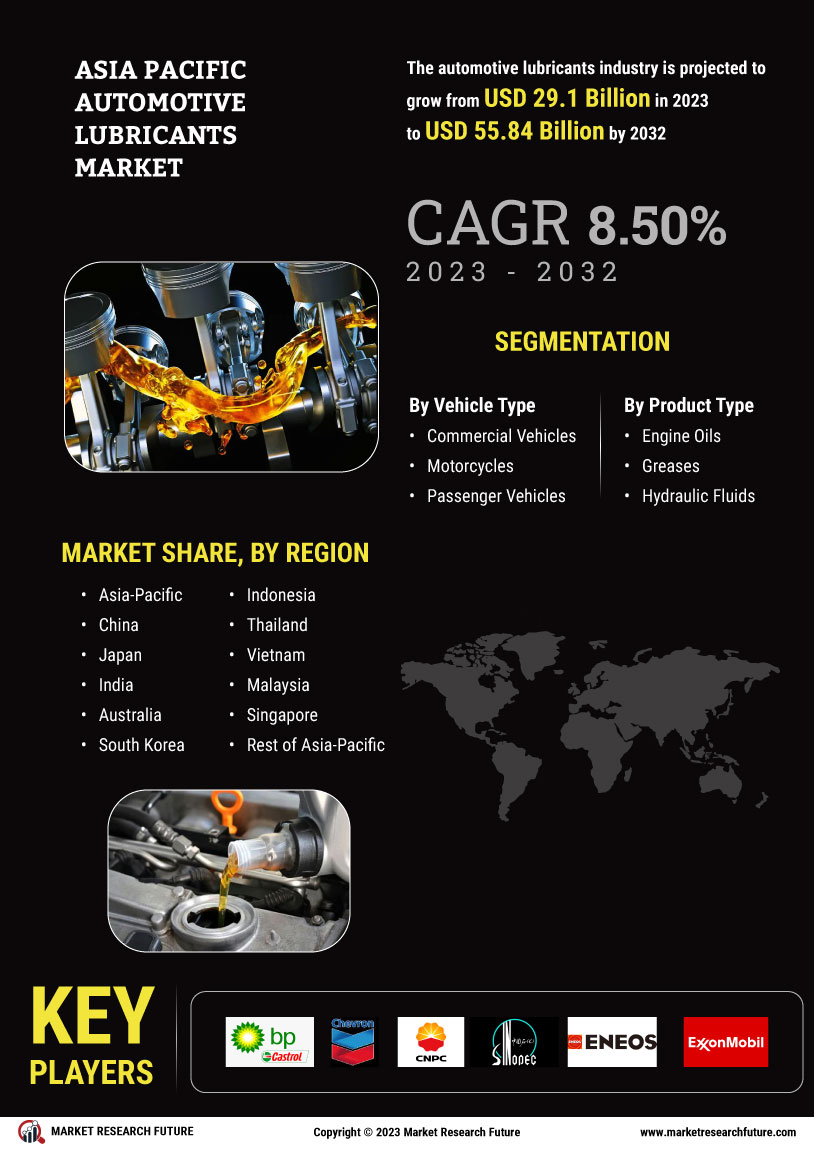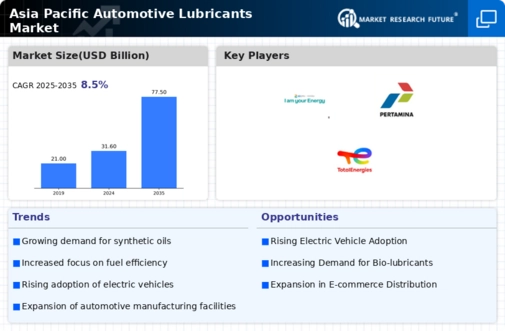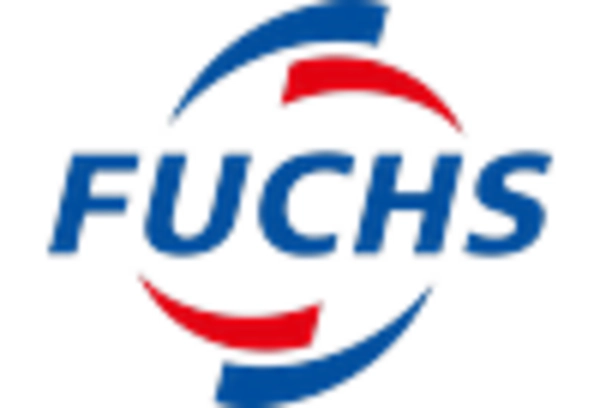China : Rapid Growth and Innovation
China holds a commanding 15.0% market share in the APAC automotive lubricants sector, driven by a booming automotive industry and increasing vehicle ownership. Key growth drivers include rising disposable incomes, urbanization, and stringent environmental regulations promoting high-quality lubricants. Government initiatives aimed at enhancing manufacturing capabilities and infrastructure development further bolster demand, particularly for synthetic lubricants that meet modern engine requirements.
India : Growing Demand and Urbanization
India's automotive lubricants market accounts for 8.5% of the APAC total, reflecting a robust growth trajectory fueled by rising vehicle sales and urbanization. The demand for high-performance lubricants is increasing, driven by the growing middle class and government initiatives promoting electric vehicles. Regulatory policies are also evolving to support cleaner technologies, enhancing the market's appeal for advanced lubricant formulations.
Japan : Innovation and Quality Focus
Japan's market share stands at 6.0%, characterized by a strong emphasis on technology and quality. The automotive lubricants market is driven by the demand for high-performance products, particularly in the automotive and industrial sectors. Government regulations encourage the use of eco-friendly lubricants, aligning with Japan's commitment to sustainability. The market is also supported by advanced manufacturing capabilities and a focus on R&D.
South Korea : Innovation and Global Presence
South Korea holds a 4.5% share in the automotive lubricants market, driven by a robust automotive industry and a focus on innovation. The demand for high-quality lubricants is increasing, supported by government initiatives promoting energy efficiency and environmental sustainability. Major cities like Seoul and Busan are key markets, with a competitive landscape featuring both local and international players vying for market share.
Malaysia : Strategic Location and Development
Malaysia's automotive lubricants market represents 2.5% of the APAC total, driven by increasing vehicle ownership and a growing automotive manufacturing sector. Government policies supporting local production and foreign investment are key growth drivers. The market is characterized by a mix of local and international brands, with Kuala Lumpur and Penang being significant hubs for automotive activity and lubricant consumption.
Thailand : Automotive Growth and Regulation
Thailand's market share in automotive lubricants is 1.8%, supported by a growing automotive manufacturing base and increasing domestic consumption. The government promotes eco-friendly lubricants through regulatory frameworks, enhancing market growth. Key cities like Bangkok and Chonburi are central to the market, with a competitive landscape featuring both local and international players catering to diverse consumer needs.
Indonesia : Rising Demand and Infrastructure Development
Indonesia's automotive lubricants market accounts for 1.6% of the APAC total, driven by increasing vehicle sales and infrastructure development. The government is investing in transportation infrastructure, which is expected to boost lubricant demand. Major cities like Jakarta and Surabaya are key markets, with a competitive landscape featuring both local and international brands focusing on affordability and quality.
Rest of APAC : Diverse Opportunities and Challenges
The Rest of APAC holds a minimal market share of 0.01%, but presents unique opportunities in niche markets. Demand for automotive lubricants varies significantly across countries, influenced by local regulations and economic conditions. The competitive landscape is fragmented, with several small players and a few international brands. Local market dynamics are shaped by varying levels of industrial development and consumer preferences.


















Leave a Comment